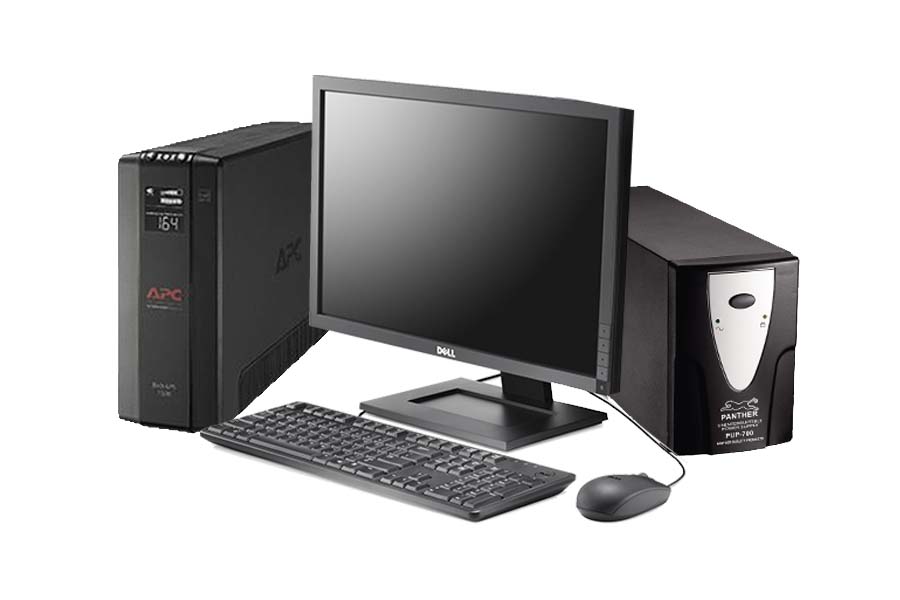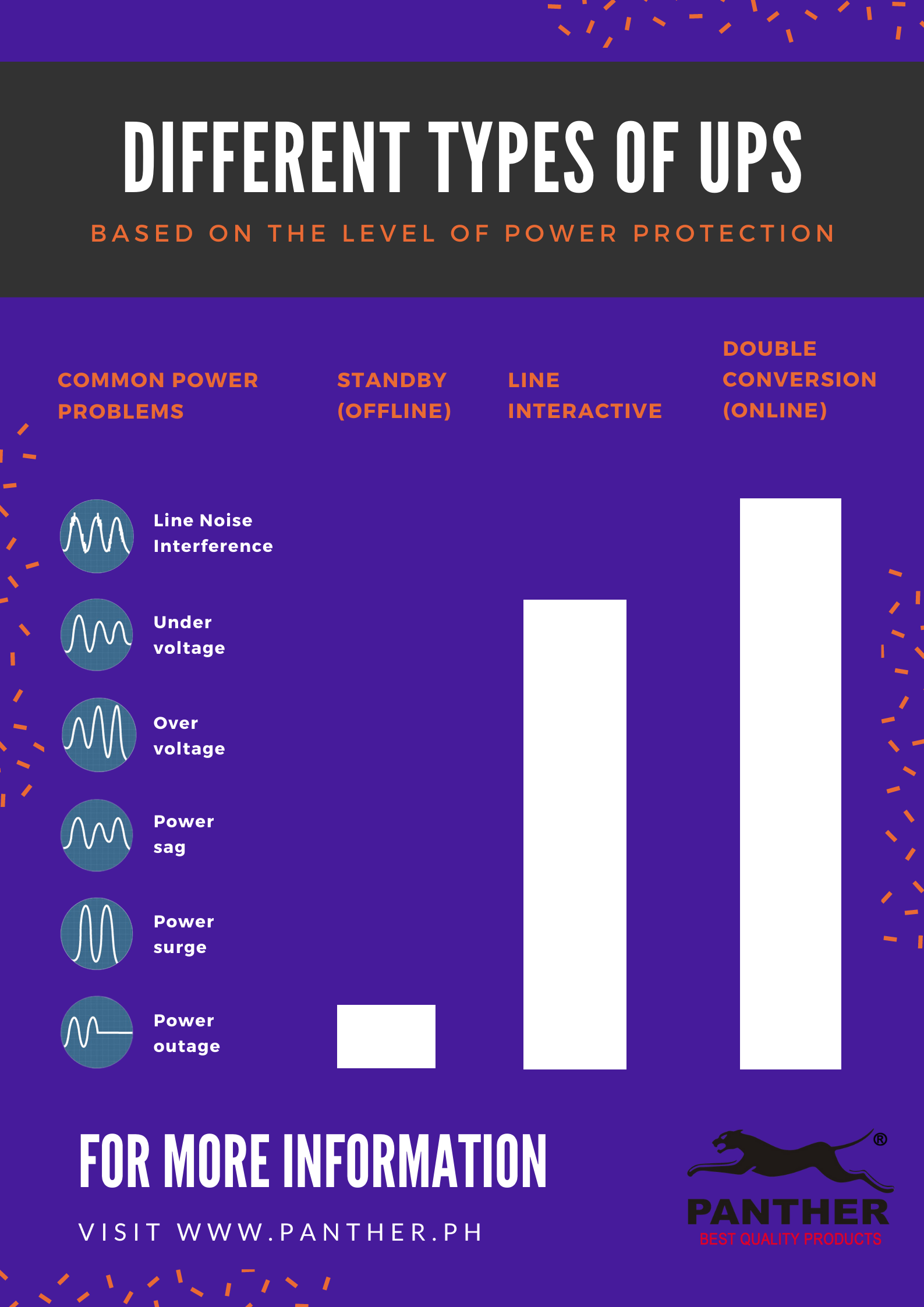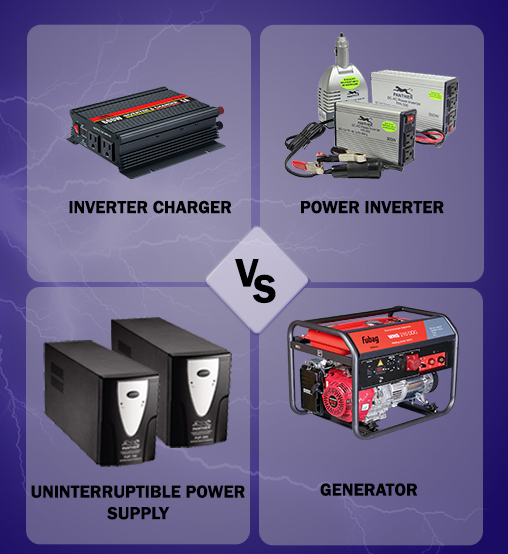
Table of Contents
In today’s increasingly technology-dependent world, we all rely on a smooth and stable power supply to work productively and efficiently. However, power outages, voltage surges and spikes are a daily reality for us in the Philippines. While we can’t prevent power outages, or predict when a surge will occur, what we can do is be prepared for these worst case scenarios by investing in an Uninterruptible Power Supply (UPS).
What’s the purpose of an Uninterruptible Power Supply?
To put it simply, a UPS (Uninterruptible Power Supply) serves as your “backup electricity.” Having a UPS serves two clear purpose:
- Protection: In cases of power outages or fluctuations, the UPS is able to provide protection from power interruptions by instantaneously switching to the backup power whenever it senses anomalies in the power supply (e.g., outage, power surge or voltage spikes, power sags, frequency variations or harmonic distortion)
- Continuity: The UPS can provide adequate power to save and close documents after which you can properly and safely shut down the device. Alternatively, the UPS can also provide sufficient power to “bridge” the time it takes before the backup power generator kicks in

What are the different types of Uninterruptible Power Supply (UPS)?
There are three types of UPS to consider with different levels of power protection. Note that the size and design of a UPS, as well as the devices being powered, will determine how long the UPS can supply power in the case of a power outage

Type 1: Standby UPS (also known as Offline UPS)
A standby UPS is the most basic and most common type of UPS. It runs your device through the normal utility supplied power (e.g., Meralco), hence the UPS is considered “offline”. However, once it detects a problem (power outage), it quickly switches to the backup DC power, and then inverts the DC power into the required 220-Volt AC power needed to run the connected equipment. When the power comes back on, the UPS will then draw power from the power supply to recharge the battery
Designed for: basic consumer electronics, basic security systems, and other basic electronic equipment.
Type 2: Line Interactive UPS
A Line Interactive UPS is similar to the standby UPS, but in addition, it incorporates technology (built-in AVR) to allow for automatic regulation of voltage supply during minor power fluctuations (causing under- or over-voltages). This type of UPS is then able to protect your appliances from power fluctuations under- and over- voltages, and not just power outages, all of which are common in the Philippines
Designed for: consumer electronics, PCs, gaming systems, home theater electronics, network equipment, and entry-to-mid-range servers
Type 3: Online UPS (also known as Double Conversion UPS)
An online UPS converts all incoming AC power to DC, and then back to AC. In essence, this UPS technology operates on isolated DC 100% of the time, and is thus able to provide consistent, clean and stable power regardless of the power anomalies found within the incoming power supply. It is uninterruptible in every sense since your device gets power from the online UPS inverter and not directly from the AC supply. As it stands, this would also be the costliest type of UPS available in the market
Designed for: mission-critical IT equipment and high-end servers, data center installations, large telecom installations and storage applications, advanced network equipment
What’s the difference between an Offline UPS, a Line Interactive UPS and an Online UPS?
In summary, these three UPS types differ across three key areas: Source of power supplied to the appliance, Degree of protection provided to your appliance, and Price tag
Source of power supplied to the appliance
Both the Offline UPS and the Line Interactive UPS power your appliance using the normal utility supplied power (e.g., Meralco). Only in the case of power outages would they make use of the UPS battery supply, by inverting the DC power source to supply AC power for a limited amount of time to your appliance.
On the other hand, the Online UPS essentially operates on isolated DC power ALL THE TIME, as it automatically converts all incoming AC power into DC power which is then inverted back to AC power to run the connected appliance.
Degree of protection provided to the appliance
The Offline UPS provides the most basic protection. It literally only provides an additional few minutes of power (via the UPS battery DC power supply) during a power outage.
On the other hand, the Line Interactive UPS is able to protect your appliance more fully. Not only can the Line Interactive UPS provide power during a power outage, but it also provides voltage regulation during “normal” hours.
Last but not the least, the Online UPS offers the most comprehensive protection since your appliance would get all its power from the Online UPS, so you are assured it’s “clean” of voltage fluctuations and even line noise interference!
Price tag
In line with the level of protection afforded by the UPS, it stands to reason that the greater the protection, the more expensive the UPS. As such, the Offline UPS is the cheapest, the Line Interactive UPS is slightly more expensive, while the Online UPS is significantly more expensive compared to the other two
What’s the difference between a UPS, a Power Inverter, an Inverter Charger and a Generator?
In all four cases (UPS, Power Inverter, Inverter Charger, Diesel/Gasoline Generator), the technology pulls power from a DC power source (battery) then converts it to an AC power supply.
However, the difference with the Uninterruptible Power Supply is that it is able to near instantaneously take over the main power supply in instances of power disruptions which would prevent data loss and minimize device damage due to incorrect shutdown. On the other hand, Power Inverters, Inverter Chargers and Generators would experience a “lag” time before it can accomplish the switch. Keep in mind that Power Inverters, Inverter Chargers and Generators have other advantages over the UPS, and would therefore be used in a different function altogether

To serve our customers’ needs, Panther offers four different line interactive UPS models – with varying wattage capacity: PUP 500, PUP 700, PUP 1500, and PUP 3000. If you have questions on what you’d need to take into account when purchasing a UPS, you can check out our handy guide on the five questions to consider when purchasing a UPS




If you want to use the photo it would also be good to check with the artist beforehand in case it is subject to copyright. Best wishes. Aaren Reggis Sela
Good day! All of the photos used in this article was created by Panther for the sole purpose of this article. If you wish to use it, kindly reach out to us beforehand. Thank you.
Please confirm what I am looking for and provide a quote. I am running a small technical piece of equipment called a HPLC. It is controlled by a tablet that monitors and runs the equipment thru the instrument power source so I need few connections maybe 1 or two. The instrument is in Africa so I need a 230v connection, European style. I believe I need a Line Interactive UPS probably in the PUP700 size (420W) to provide surge and limited backup conditioned power. Thanks you for your advise. Thad
Good day! From our understanding, your equipment from Africa requires 230V, and the Philippines uses 230V; as such no transformer (voltage converter) is required. If so, the Panther Line Interactive UPS (PUP 701) will be able to provide ~6-20 mins backup power (depending on battery condition and load), as well as voltage regulation through the built-in AVR. Please expect to receive a quotation for PUP 701 in your email within the day.
Good info
We’re glad you found it helpful!